Pershing House facts for kids
Quick facts for kids |
|
|
Pershing House
|
|
|
U.S. Historic district
Contributing property |
|
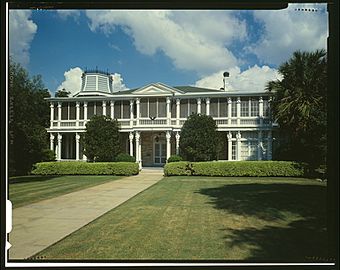
Pershing House
Fort Sam Houston |
|
| Location | Staff Post Rd., Fort Sam Houston, San Antonio, Texas |
|---|---|
| Architect | Alfred Giles |
| Part of | Fort Sam Houston (ID75001950) |
| NRHP reference No. | 74002058 |
| Added to NRHP | July 30, 1974 |
The Pershing House is a historic building located at Fort Sam Houston in San Antonio, Texas. It was added to the National Register of Historic Places on July 30, 1974. Even though the house was built in 1881, it got its current name because John J. Pershing lived there in 1917.
The house was designed by architect Alfred Giles. It is a large, two-story home, about 10,830 square feet (1,000 square meters) in size. Over the years, the house has been updated. It now has electricity and air conditioning. The front porch has been enclosed, and the plumbing has been improved.
Contents
A Home for Army Leaders
At one time, Fort Sam Houston was the biggest Army base in the United States. Many important Army leaders lived in Pershing House. These leaders were some of the most successful in the United States Army. Many of them had even received the Medal of Honor, which is a very special award for bravery. Almost half of the base commanders who lived here are buried in Arlington National Cemetery.
General Pershing's Stay
John J. Pershing moved to Fort Sam Houston from Fort Bliss. He had just finished helping with the Pancho Villa Expedition. He only stayed at Fort Sam Houston for two months. After that, he was given command of the American forces in Europe during World War I. Pershing reached the highest rank ever given to an American army officer. He also helped create the Treaty of Versailles, which ended World War I.
Remembering the Residents
A special plaque at Fort Sam Houston lists the names of all the important commanders who have lived in Pershing House. This plaque was given to the fort by Julia Cotton White. She was the wife of General Isaac D. White, who was also a base commander. The plaque is still updated today to keep a record of everyone who has lived in this historic home.
Commanders of Pershing House
Many famous and important military leaders have lived in Pershing House. Here is a list of some of the commanders who called this house home:
| Years Lived Here | Name | Image | Born–Died | Burial Place | Key Facts |
|---|---|---|---|---|---|
| 1881–83 | Brigadier General Christopher C. Augur |  |
(1821–1898) | Arlington National Cemetery | Veteran of the American Civil War. |
| 1883 | Brigadier General Ranald S. Mackenzie |  |
(1840–1899) | West Point Cemetery | Fought in the Red River War. |
| 1883–84 | Lieutenant General John M. Schofield |  |
(1831–1906) | Arlington National Cemetery | Received the Medal of Honor. Later served as U.S. Secretary of War. |
| 1884–1892 | Brigadier General David S. Stanley | 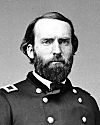 |
(1828–1902) | United States Soldiers' and Airmen's Home National Cemetery | Received the Medal of Honor. |
| 1892–95 | Major General Frank Wheaton | 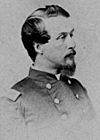 |
(1833–1903) | Arlington National Cemetery | Veteran of the American Civil War. |
| 1895–97 | Major General Zenas R. Bliss |  |
(1835–1900) | Arlington National Cemetery | Received the Medal of Honor. |
| 1897–98 | Major General William Montrose Graham, Jr. | 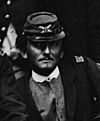 |
(1834–1916) | Congressional Cemetery | American Civil War veteran and nephew of George Meade. |
| 1899–1901 | Brigadier General Chambers McKibbin | (1841–1918) | Arlington National Cemetery | American Civil War veteran. | |
| 1902–1904 | Brigadier General Frederick Dent Grant | 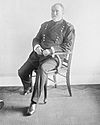 |
(1850–1912) | West Point | Veteran of the Spanish–American War. |
| 1904–1906 | Brigadier General Jesse M. Lee | Served in the Philippines. | |||
| 1906–1907 | Brigadier General William S. McCaskey | (1843–1914) | San Francisco National Cemetery | Informed George Armstrong Custer's widow about the Battle of the Little Bighorn. | |
| 1907–1910 | Brigadier General Albert L. Myer | ||||
| 1910–1911 | Brigadier General Ralph W. Hoyt | ||||
| 1911–1912 | Brigadier General Joseph Wilson Duncan | (1853–1912) | Arlington National Cemetery | Participated in the capture of Mount Dajo, Philippine Islands. | |
| 1913–1915 | General Tasker H. Bliss | 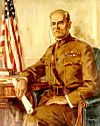 |
(1853–1930) | Arlington National Cemetery | U.S. Army Chief of Staff. |
| 1915–1917 | Major General Frederick Funston | 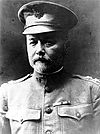 |
(1865–1917) | San Francisco National Cemetery | Received the Medal of Honor. |
| 1917 | General of the Armies of the United States John J. Pershing | 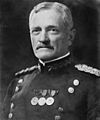 |
(1860–1948) | Arlington National Cemetery | Highest rank ever given to an American army officer. |
| 1917 | Major General James Parker | (1854–1934) | Saint Marys Episcopal Churchyard | Received the Medal of Honor. | |
| 1917–1918 | Major General John Wilson Ruckman | (1858–1921) | West Point | Received the Distinguished Service Medal for service in World War I. | |
| 1918 | Major General Willard Ames Holbrook | 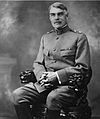 |
(1860–1932) | Arlington National Cemetery | Received the Distinguished Service Medal. |
| 1918–1919 | Major General DeRosey Carroll Cabell, Sr. | (1861–1924) | San Francisco National Cemetery | Received the Distinguished Service Medal. | |
| 1919–1921 | Major General Joseph T. Dickman |  |
(1857–1927) | Arlington National Cemetery | Many awards; a ship was named after him. |
| 1921–1922 | Chief of Staff of the U.S. Army John L. Hines | 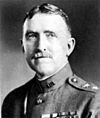 |
(1868–1968) | Arlington National Cemetery | Featured on a U.S. postage stamp. |
| 1922–1924 | Major General Edward Mann Lewis | 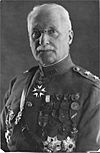 |
(1863–1949) | San Francisco National Cemetery | Received the Distinguished Service Medal. |
| 1924, 1925–1928 | Major General Ernest J. Hinds | (1864–1941) | Fort Sam Houston National Cemetery | A ship was named after him. | |
| 1924–1925 | General Charles Pelot Summerall | (1867–1955) | Arlington National Cemetery | Chief of Staff of the United States Army. | |
| 1928 | Major General Thomas Quinton Donaldson, Jr. | (1864–1934) | Arlington National Cemetery | Served as Inspector General. | |
| 1928–1930 | Major General William Lassiter | Received the Distinguished Service Medal and Silver Star. | |||
| 1930–1933 | Major General Ernest B. Winans | 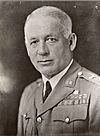 |
(1869–1947) | Received the Distinguished Service Medal for World War I. | |
| 1933–1934 | Major General Johnson Hagood | 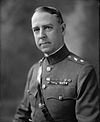 |
(1873–1948) | Magnolia Cemetery | World War I veteran. |
| 1936 | Major General Frank Parker | 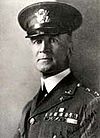 |
(1872–1947) | Commander of the 8th Corps Area. | |
| 1936–1940 | Lieutenant General Herbert Jay Brees |  |
(1877–1958) | Fort Sam Houston National Cemetery | Received the Distinguished Service Medal and Silver Star. |
| 1941–1942 | General Walter Krueger |  |
(1881–1967) | Arlington National Cemetery | Commander in the South West Pacific Area during World War II. |
| 1942–1943 | General Courtney Hodges |  |
(1887–1966) | Arlington National Cemetery | Commander in Northwest Europe during World War II. |
| 1944 | General William Hood Simpson | 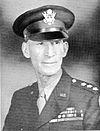 |
(1898–1990) | Arlington National Cemetery | Commander in northern Europe during World War II. |
| 1944–1945 | General John P. Lucas | 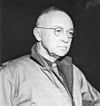 |
(1890–1949) | Arlington National Cemetery | Commander during the Italian Campaign of World War II. |
| 1945 | Lieutenant General Alexander Patch | 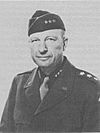 |
(1889–1945) | West Point Cemetery | Commanded forces during the Guadalcanal Campaign and Operation Dragoon. |
| 1946–1947 | General Jonathan M. Wainwright |  |
(1883–1953) | Arlington National Cemetery | Received the Medal of Honor. |
| 1947–1949 | 4-star General Thomas T. Handy | 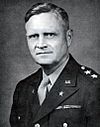 |
(1892–1982) | Arlington National Cemetery | Deputy Chief of Staff, United States Army. |
| 1949–1952 | General LeRoy Lutes | 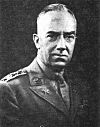 |
(1890–1980) | Arlington National Cemetery | Served on Dwight D. Eisenhower's General Staff. |
| 1952–1953 | General William M. Hoge | 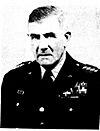 |
(1894–1979) | Arlington National Cemetery | Directed the building of the ALCAN Highway. |
| 1953 | General John E. Dahlquist |  |
(1896–1975) | Arlington National Cemetery | World War I division commander. |
| 1953–1955 | General Isaac D. White |  |
(1901–1990) | Unknown | Commander, U.S. Army Pacific. |
| 1955–1958 | Lieutenant General John Howell Collier | 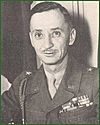 |
(1899–1980) | Fort Sam Houston National Cemetery | Commander of 2nd Armored Division units in World War II. |
| 1958–1959 | General Guy S. Meloy, Jr. | 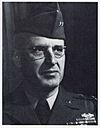 |
(1903–1964) | Arlington National Cemetery | Commander of all U.S. forces in Korea during the Cold War. |
| 1959–1961 | Lieutenant General Edward Thomas Williams | 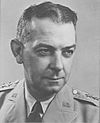 |
(1901–1973) | Fort Sam Houston National Cemetery | Chief of artillery for the Third United States Army in Europe during World War II. |
| 1961–1962 | Lieutenant General Donald Prentice Booth | 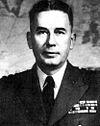 |
(1902–1993) | Arlington National Cemetery | Commanding General of Fourth Army. |
| 1962–64 | Lieutenant General Carl H. Jark | (1905–1984) | Fort Sam Houston National Cemetery | Received the Distinguished Service Medal. | |
| 1964–66 | Lieutenant General Robert Wesley Colglazier, Jr. | (1904–1993) | Fort Sam Houston National Cemetery | Received multiple Distinguished Service Medals. | |
| 1966–1967 | Lieutenant General Thomas W. Dunn | (1908–1983) | West Point | Received the Distinguished Service Medal for service in Vietnam. | |
| 1967–1968 | Lieutenant General Lawrence J. Lincoln | (1909–2000) | Arlington National Cemetery | Received three Distinguished Service Medals. | |
| 1968–1971 | Lieutenant General Harry H. Critz | (1912–1982) | Fort Sill Post Cemetery | Received the Distinguished Service Medal for the Vietnam War. | |
| 1971 | Lieutenant General George G. O'Connor | ||||
| 1971 | 4-star General George V. Underwood, Jr. | 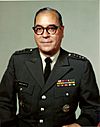 |
(1913–1984) | Fort Bliss National Cemetery | Received the Army Distinguished Service Medal for service in Vietnam. |
| 1971–1973 | Lieutenant General Patrick F. Cassidy | (1915–1990) | Fort Sam Houston National Cemetery | Received the Distinguished Service Cross. |



